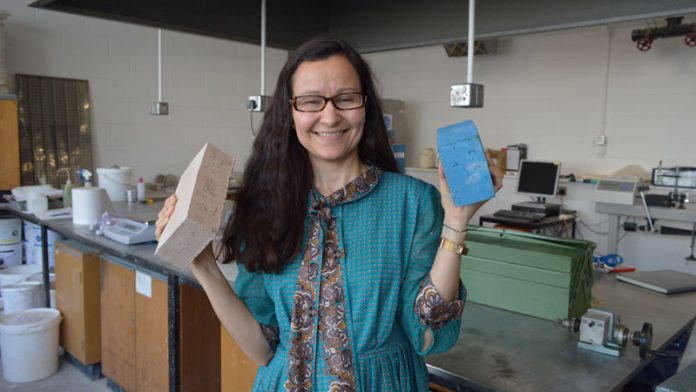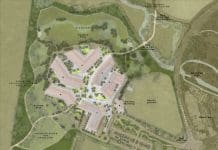Researchers at Heriot-Watt University have created a brick made from 90% recycled construction and demolition waste to help support the construction industry’s sustainability ambitions
The K-Briq produces just a tenth of the CO2 emissions of a traditional fired brick and is now being produced commercially by spin-off company Kenoteq.
Up to 85% of bricks used in Scotland are currently being imported from England or Europe. The team now has an agreement with Hamilton’s Waste & Recycling to produce the K-Briq onsite at their recycling site, thereby reducing transport miles and carbon emissions.
Supporting sustainable construction
Professor Gabriela Medero, who conceived the idea of the K-Briq, commented: “We hope K-Briq will help support the sustainability ambitions of today’s construction industry.
“I have spent many years researching building materials and have been concerned that modern construction techniques exploit raw materials without considering that they are amongst the largest contributors to carbon emissions. The amount of waste they produce is not sustainable long-term.
“The K-Briq looks like a normal brick, weighs the same and behaves like a clay brick but offers better insulation properties. It is sustainable and not kiln-fired so it is far better for the environment and represents massive savings for the construction industry in terms of related taxes.”
Dr Sam Chapman, who works in close partnership with Professor Medero on Kenoteq, added: “Kenoteq has invested in machinery that can produce three million bricks per year. In the past year, we’ve produced thousands of bricks and put them through rigorous testing with the K-Briq now commercially available to construction clients.
“The Scottish Government has set very high targets for housebuilding with 50,000 new homes earmarked for construction in the next three years. We hope Kenoteq will be part of those homes.”


















Very interesting and great for the environment if it works, but what is used to bind the material together and what are the results of the fire testing (EN 1716; EN 1182; EN 13823 and EN 11925-2)? Does it have BSEN 13501 classification? Without this data, it’ll struggle to get used in ‘the new world’.